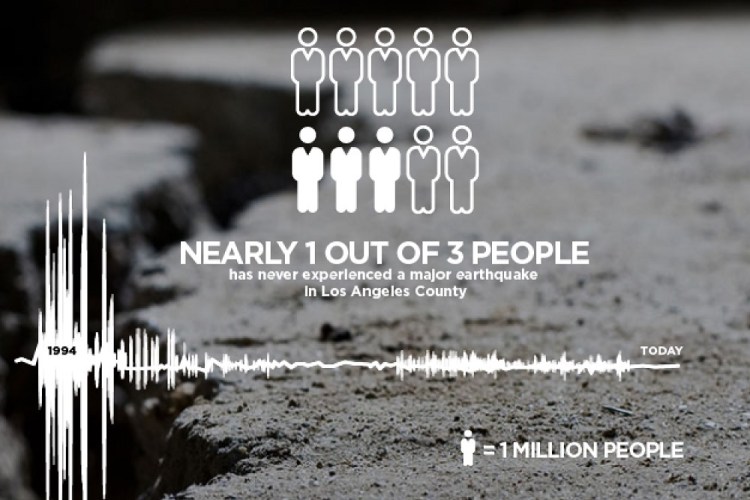Back in 1994, about 40 percent of Los Angeles County residents had earthquake insurance at the time of the Northridge Earthquake, a 6.7-scale quake that leveled neighborhoods. Now, only 16 percent of those residents have quake insurance.
We know that thanks to Risk Management Solutions, which has built a big data platform for catastrophe risk modeling. Bobby Soni, chief platform and services officer at RMS, spoke about the challenge of building that platform at VentureBeat’s DataBeat 2014 conference today.
RMS started two decades ago, but more recently it has launched RMS(one), a service for risk management experts that can process an enormous amount of data and help insurers quantify the kind of risk they face as a result of natural disasters.
Soni said that the RMS has data on about 90 percent of the insured buildings in the United States, or roughly 150 million buildings. It also has similar data on buildings in a total of about 95 percent of the insured buildings in 90 other countries around the world. That’s possibly a billion buildings around the world.
“We have models that allows insurers to figure out that, if there was an earthquake in the Bay Area or a typhoon in Japan, or a fire in London, or a terrorist attack in downtown New York, to understand the damage profile and the financial risk they are carrying,” Soni said. “When Hurricane Sandy hit, we know that the damage was worse from the storms that followed and flooded the subways.”
It became hard for the New York transportation authority to get insurance after that, so the agency floated a $200 million bond. The risk profile for that bond is powered by the RMS(one) platform.
RMS has data on buildings and the risks associated with features of those buildings such as the soil they are built on. It also has data on other things like vehicles, ships, or crops. RMS also has to have data on contract terms on policies associated with those buildings.
“What’s cool is how they manage risk data across different asset categories,” said Max Schireson, chief executive of database firm MongoDB. “What’s cool is how they integrate that data.”
MongoDB helps deliver the big data so that those in the front line who are writing policies can get access to the data in an instant. That demands real-time access, a high degree of efficiency and an ability to scale up smoothly from one server to hundreds of servers. The data often has to be accessible across open computing platforms.
Founded in 1988, RMS had models for a long time, but it needed to build something that was a “paradigm shift” away from what it was doing in the past. It had to create a near-real-time enterprise system that worked not just for data scientists but for the insurance experts across entire companies. The company can do that by using elastic compute technology that takes advantage of commodity servers.
“The computational need to run these databases in real-time is tremendously high,” Soni said. “Five years ago, this would not have been possible.”
VentureBeat's mission is to be a digital town square for technical decision-makers to gain knowledge about transformative enterprise technology and transact. Learn More


